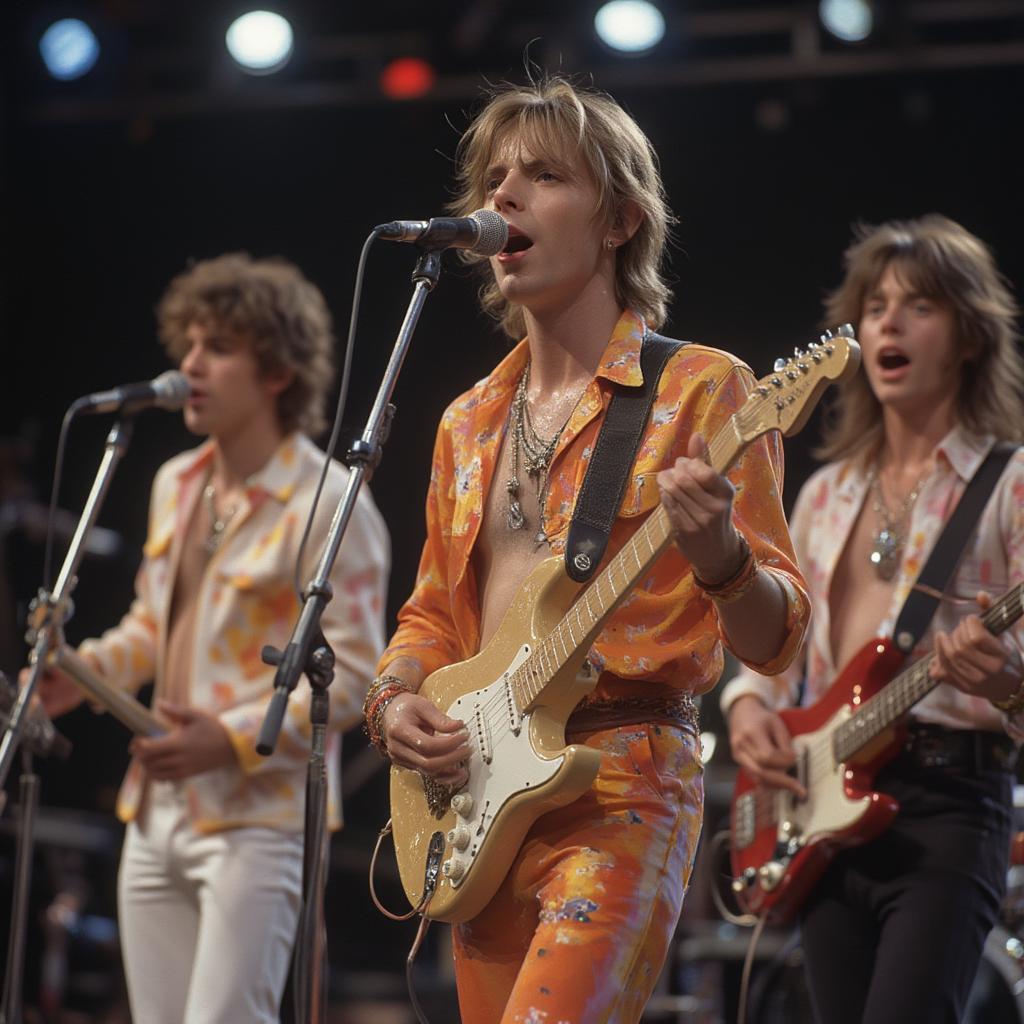BBC Top of the Pops: A Look Back at the Iconic Music Show

BBC’s Top of the Pops, affectionately known as TOTP, holds a special place in music history. It was more than just a television program; it was a cultural phenomenon that shaped music tastes and launched careers for decades. This article delves into the history, impact, and legacy of this legendary show, exploring its influence on music charts, popular culture, and the artists who graced its stage.
The Rise of Top of the Pops
The brainchild of producer Johnnie Stewart, Top of the Pops first aired on New Year’s Day in 1964. The show’s concept was simple yet revolutionary: to present the top-selling singles of the week in a dynamic television format. Back then, the format was novel, providing a visually engaging way to experience popular music beyond just listening to it on the radio or a record player. The program initially aired from a small studio in Manchester, broadcasting a half-hour of performances and chart rundowns. The impact was immediate, and Top of the Pops quickly became must-watch television, capturing the attention of the youth of the time.
The Changing Face of Music Television
Over the decades, Top of the Pops evolved with the changing landscape of music. From the swinging sixties to the disco era, punk rock, and the rise of pop in the 80s and beyond, the show adapted to showcase the musical diversity of the time. The presentation styles, fashion, and choreography all reflected the zeitgeist of each era. It was a dynamic, ever-changing program that mirrored, and at times shaped, popular culture. The show became notorious for its performances – sometimes raw, sometimes extravagant – but always captivating.
“Top of the Pops was the gateway for so many artists. It wasn’t just a show; it was a weekly ritual, a cultural touchstone. It connected the artist directly to the fans in a way no other medium could at the time,” comments music historian Dr. Eleanor Vance. “To be on Top of the Pops was to ‘make it’ in the UK.”
The Impact on Music Charts and Popular Culture
The show’s influence on the British music charts was undeniable. A performance on Top of the Pops could propel a single to number one overnight, and it became the primary measure of commercial success. For many up-and-coming artists, an appearance on the show was the biggest opportunity they could hope for, and being on the show also secured them a place in the national consciousness. The show’s weekly broadcast became a major event in UK households. Families and friends gathered to watch, discussing their favourite artists and songs. It wasn’t merely about watching performances; it was a social activity that cemented the role of music in everyday life.
Key Features of the Show
- Chart Countdown: The weekly rundown of the top singles was the show’s backbone, creating suspense and excitement as viewers anticipated their favourite song.
- Live Performances: Though live vocals were often a rarity, the visual spectacle was the appeal, showcasing the bands and artists that were popular at the time.
- Guest Presenters: The rotating cast of presenters became personalities in their own right, helping to create an authentic bond with the audience.
- Special Episodes: Christmas specials and highlights shows offered festive cheer and a look back at the year’s best moments.

The Legacy of Top of the Pops
Even after its cancellation in 2006, Top of the Pops left an indelible mark on British pop culture. Its impact can still be felt today in the way music is consumed and presented on television. The show’s archival footage provides a valuable record of musical trends and fashions throughout its four-decade run. The influence of Top of the Pops extends to today’s music television, with shows and platforms borrowing ideas that the show once pioneered. It remains a symbol of a certain era of British music, a period of shared experiences and a collective love for the music of the time. Many people have fond memories of growing up watching the program and the joy it brought to them.
The End of an Era
The decision to discontinue the weekly broadcast was due in part to changing audience habits, the rise of music videos, and the proliferation of other music channels. While a shorter, yearly special still airs, the weekly Top of the Pops format is missed by many fans who feel it provided a regular ritual of enjoying chart music. Though it’s no longer part of our weekly viewing, the legacy of Top of the Pops remains a topic of fond memories and a significant part of popular music history. The show remains influential, shaping how music is consumed and presented on television even to this day. 
According to Simon Foster, a leading music journalist, “Top of the Pops was more than a TV show; it was a mirror reflecting the changing musical tastes and cultural shifts of each generation. Its influence on how the charts are perceived and how artists present themselves is still incredibly relevant.”
Modern Music and The Echoes of Top of the Pops
Though Top of the Pops may not be on our television screens every week, its spirit continues in modern music. Contemporary artists still aspire to the kind of iconic status the show conferred. The way artists use performance, presentation, and image continues to be shaped by the lessons learned from the show’s legacy. The show has also become a touchstone for music fans of all ages, who recall memories of watching the program and engaging with the music of the time. Through documentaries, reruns, and online archives, Top of the Pops continues to resonate with a new generation of listeners, ensuring that its importance will not be forgotten. It truly was a program that defined an era in British music and culture.
Conclusion
Top of the Pops was not just a television program; it was an institution. Its weekly rundown of the top music charts provided a shared experience for millions, influencing trends and launching countless careers. The show’s impact is still felt today in how music is presented and consumed. While the weekly format may be gone, its memory lives on, ensuring that the legacy of Top of the Pops remains a significant chapter in the story of British pop music.
Frequently Asked Questions (FAQ)
What exactly was Top of the Pops?
Top of the Pops, or TOTP, was a weekly British music chart television program, showcasing the top-selling singles of the week through live performances and chart rundowns. It was a key part of UK popular culture for over 40 years.
When did Top of the Pops first air?
The first episode of Top of the Pops aired on New Year’s Day in 1964, broadcasting from Manchester and quickly becoming a staple of British television.
How did Top of the Pops affect the music charts?
A performance on Top of the Pops had a significant impact on the music charts, often propelling songs to number one overnight. It became the primary measure of commercial success for many artists.
Why was Top of the Pops so popular?
The show’s popularity stemmed from its ability to present music visually, creating a dynamic and engaging experience beyond just listening to songs on the radio. It was also a weekly event that many households watched together.
What caused the end of the weekly Top of the Pops?
The decision to discontinue the weekly broadcast was primarily due to changing audience habits, the rise of music videos, and the increased availability of other music channels.
Does Top of the Pops still air today?
While the weekly format ended in 2006, a shorter, yearly Christmas special is still broadcast, offering highlights from the past year.
What is the legacy of Top of the Pops?
The legacy of Top of the Pops is the show’s influence on music television, the impact it had on popular culture, and its historical record of British music over several decades.




